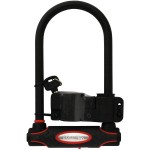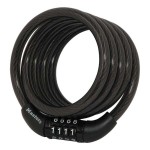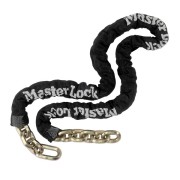Bike Locks – Prevent Bicycle Theft with Proper Bicycle Locking Procedures
Do you want to just deter a bike thief, or do you want to use your bike locks with confidence and prevent bike theft? Let’s start with not just the value of your bicycle, but also how much you personally value your bicycle. As a means of personal transportation, exercise and any sentimental attachment you have for the ease of the ride, places you’ve ridden or experiences you have had; your bicycle is a valued possession and you wouldn’t just give your bike to a thief, would you?
When it comes to bicycle security products, prevention is paramount. If you leave a bike unlocked and unattended what is to stop someone from walking off with it, or simply hopping on and riding away, dissuasion through deterrence is the purpose of securely locking your bike. Anything that is not permanently secured has the potential to invite in the opportunistic thief. Some people will even take the seat off a bicycle, talk about a jerk; this is why certain individuals who lock their bike in public will take their bicycle seat with them. Arguable a slight deterrent to the bike thief making it tougher to make a quick sale, but not a great deterrent if the rest of the bicycle is not properly locked.

Now it is time to get smart about proper bicycle locking procedures. There are many resources available on proper bicycle locking procedures. The National Bike Registry recommends the following as ‘The Best Physical Prevention’ for bike owners:
1. Lock as much of the bike as possible. Remove the front wheel if there is quick release; put it next to the back wheel; run the lock through both rims, the frame, and a parking meter.(A favorite trick is to alter a signpost for easy removal. The thief waits for the owner to carefully lock the bike to the pole; after the owner’s departure, he slides the pole out of the lock, resets the trap, and absconds.)
2. Use a U-shaped lock.
3. Lock the bicycle to something that can’t be broken or ripped out of the ground. Make sure a thief can’t lift the bike off the mount (such as off a pole).
4. Lock the bicycle in a lighted, visible place where there is plenty of pedestrian traffic.
5. Consider making the bicycle less attractive (by putting some ugly tape on it, for example) or purchasing a bike with a simple, nondescript paint job. The more the bike stands out, the more likely it will disappear.
6. Make sure the lock is not near the ground where it can be hammered.
7. Do not leave the bicycle unlocked in a garage directly visible off the sidewalk. Keep the bicycle locked to the garage.
Many thefts occur in unlighted areas with little pedestrian traffic. Many others result when owners leave bicycles unlocked because they think the area is safe (e.g., the balcony of an apartment building).
Also, be aware of neighborhoods where bike theft is more common and don’t leave your bike there unattended. Even if your bike is locked up, if theft is common, then there is a better chance that your bike will be stolen.
U-Locks are commonly recommended as the more, or most, reliable bicycle security product. U-Locks can be very effective, seeing how we have come a long way from the U-Locks that could be opened with a Bic pen. The top quality hardened steel U-Locks will be resistant to cutting or sawing; and a double locking shackle will withstand prying or pull force, sometimes up to or above 3 tons of force; that is over 26,000 newtons. Understanding a cyclists concern with carrying extra weight, the Master Lock No. 8195 U-Lock comes in at under 3 lbs. or 1.33 kilograms. Not too bad when you consider that the manufacturer features a $1000 anti-theft guarantee on the 8195. Important Note on U-Locks: You cannot leave any wiggle room. Thieves will try to wedge and pry apart the U-Lock to release your bike. A longer U-Lock, like the No. 8195DLW, may have room for a detached front wheel to be shackled up with the rear wheel and bike frame, but again, you do not want to have any room for movement to give way to an opportunity for a would be bicycle thief.

Just like the old adage of, ‘two heads are better than one’, the same goes for bicycle locks. If you are a proponent of safe cycling chances are you will usually have a helmet with you. No matter the size of your U-Lock, if you are locking both wheels through the frame to a lager permanently secured post or bike rack there will not be much room for your helmet; in come the cable locks. Recommended to be used in tandem with a U-Lock, the addition of a second locking device, as opposed to just a looped cable, will provide a justifiable secondary deterrent to thieves. Even something as simple as the Master Lock No. 8143 fixed combination cable lock can be threaded through your tire rims, wrapped around your bike frame and even your helmet with its 4 foot (1.2m) length. Put yourself in the thief’s shoes, if you saw a bike with two locks, would you go for it or would you move onto easier pray with fewer or no locks? Especially if the stolen bicycle sale price is maybe $100 for the bicycle that purchased for hundreds or upwards of a thousand dollars versus the risk of arrest.

Last, but certainly not least, there are the chain bike locks. The oldest form of bicycle security (see our last blog), all it takes is a chain and a padlock; which you can purchase together or separately. The Master Lock No. 43 Chain is a 5”6” (1.67M) hardened steel reinforced with boron and titanium chain with hexagonal shape offering 30,000 lbs. (13,608 kg.) of cut strength, plus a black nylon sleeve to protect equipment. With the No. 43 Chain there is a little issue of weight at 5 lbs. (2.27 kg.) or the big issue that it is just the chain, which would be fine attached to a U-Lock. Or you have the option of looking into the comparable Motorcycle Chain Master Lock No. 8296 with Pro Series Shrouded Lock included.

Keep in mind that using just a standard lightweight chain lock or cable lock on its own, without the added security of a U-Lock, is the lowest grade of bicycle security. With a crowbar or some bolt cutters a determined thief can get through a lightweight low grade cable or chain. If you do not want to be one of the many thousands of people who have their bike stolen each year, be smart about the security of you bicycle and be sure to use your bike locks properly.
The Lock People Google+